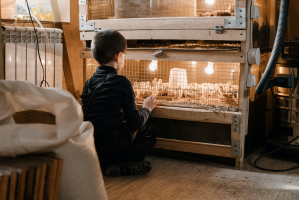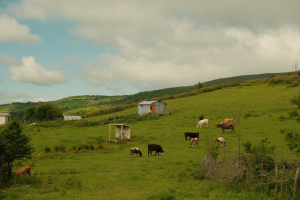Top 10 Descriptive Essay Examples on Animals
Explore the enchanting world of animals through vivid Descriptive Essay Examples. Dive into detailed portrayals that bring the unique qualities and habitats of ... read more...various creatures to life. From the majestic to the charming, these essays offer a glimpse into the diverse and fascinating lives of animals, fostering a deeper appreciation for the beauty of the natural world.
-
Essay topic: Describe the most intelligent animal from your points, what is it like and characteristics?
Answer:
Widely regarded as one of the most intelligent creatures on Earth, the bottlenose dolphin is a remarkable marine mammal with a host of fascinating characteristics. These dolphins are celebrated not only for their sleek and playful appearance but also for their highly developed cognitive abilities. The bottlenose dolphin possesses a sleek, streamlined body that is typically grayish in color, with a lighter underside. Their prominent, bottle-shaped rostrum, or snout, distinguishes them and gives them their name.
What sets the bottlenose dolphin apart is its remarkable brain, which is large, complex, and known for its advanced capabilities. With a brain-to-body mass ratio comparable to that of humans, these dolphins exhibit an extraordinary level of intelligence. The dolphin's brain is characterized by its convoluted structure, indicating a high degree of neural complexity. This complexity is believed to play a role in their sophisticated problem-solving abilities, social behaviors, and communication skills.
Communication is a key aspect of the bottlenose dolphin's intelligence. They are known for their intricate system of vocalizations, clicks, and whistles, which they use to convey information and maintain social bonds within their pods. The ability to produce a wide range of sounds allows these dolphins to communicate complex messages, indicating a level of linguistic sophistication that is rare in the animal kingdom.
Social intelligence is another remarkable feature of bottlenose dolphins. They live in tight-knit social groups called pods, where individuals engage in cooperative behaviors, such as hunting and protecting one another from predators. Within these pods, dolphins form strong social bonds, demonstrating a level of empathy and understanding that points to their advanced cognitive abilities.
The problem-solving skills of bottlenose dolphins are evident in their ability to use tools and exhibit creative problem-solving behaviors. They have been observed using sponges to protect their snouts while foraging on the ocean floor, showcasing a level of tool use that is not commonly seen in marine animals. These displays of innovation and adaptability contribute to the perception of bottlenose dolphins as highly intelligent beings.
One of the most captivating aspects of the bottlenose dolphin's intelligence is its playful nature. Dolphins are known for engaging in a variety of games and acrobatic behaviors, often interacting with other marine species and even with humans. This playful demeanor serves multiple purposes, including cognitive stimulation, social bonding, and the sheer joy of exploration.
In conclusion, the bottlenose dolphin, with its sleek appearance, complex brain, and advanced cognitive abilities, stands as one of the most intelligent animals on Earth. Their sophisticated communication, social intelligence, problem-solving skills, and playful behaviors contribute to their well-deserved reputation as sentient beings in the vast and intricate tapestry of the natural world. Studying and appreciating the intelligence of bottlenose dolphins not only enhances our understanding of these remarkable creatures but also underscores the importance of conservation efforts to protect their marine habitats.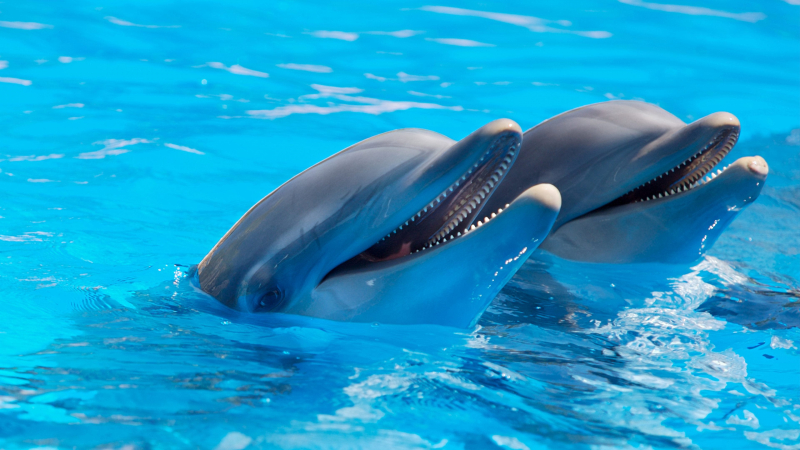
Photo by HAMID ELBAZ via pexels 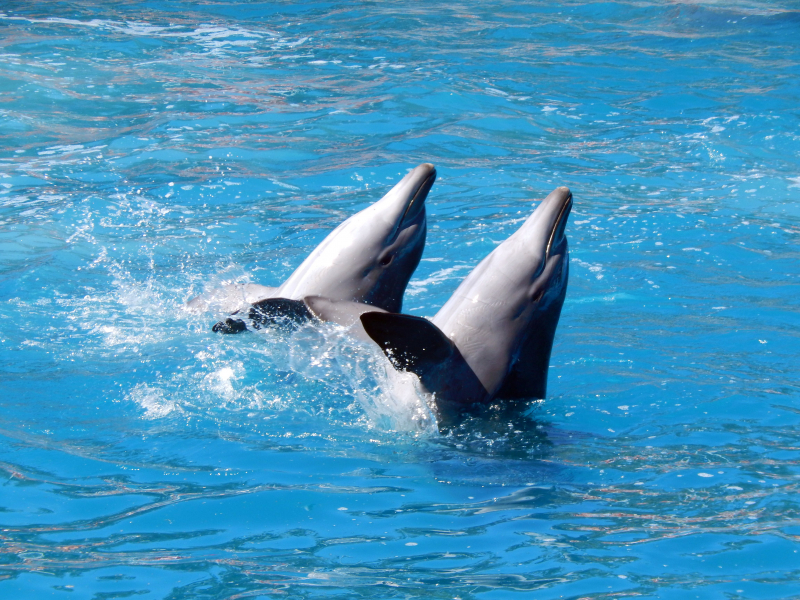
Photo by Pablo Quiroga via pexels -
Essay topic: Describe the most dangerous animal from your points, what is it like and characteristics?
Answer:
Among the myriad of creatures inhabiting the natural world, one animal that is often regarded as the most dangerous is the fearsome Bengal tiger. The Bengal tiger is a majestic yet formidable predator, with a striking coat of vibrant orange fur adorned with distinctive black stripes that serve as a natural camouflage in the dense jungles it calls home. The powerful build of the Bengal tiger, characterized by muscular limbs and a robust body, showcases its prowess as a top-tier carnivore in the animal kingdom.
The defining characteristic of the Bengal tiger is its sharp, gleaming eyes that exude an unwavering intensity. The eyes of this apex predator, a piercing amber or yellow in color, contribute to its reputation as a symbol of strength, agility, and stealth. When locked onto a target, the tiger's gaze reflects an innate understanding of its surroundings and an acute awareness of every movement in its territory.
The most notable feature of the Bengal tiger, and arguably its most dangerous weapon, is its formidable set of teeth and claws. The large canines, designed for gripping and puncturing, coupled with razor-sharp claws, make the Bengal tiger a formidable hunter capable of taking down prey much larger than itself. These lethal weapons, combined with the tiger's stealthy approach and powerful pounce, ensure that it remains at the top of the food chain in its natural habitat.
In addition to its physical prowess, the Bengal tiger's solitary and territorial nature adds to its perceived danger. With a vast home range, the tiger establishes its territory with scent markings and roars that resonate through the dense foliage. Encroaching into the domain of a Bengal tiger requires caution, as the consequences of entering its territory can be grave.
The Bengal tiger's danger is not limited to its physical capabilities; its role as an apex predator also plays a crucial ecological role in maintaining the balance of the ecosystem. As a keystone species, the presence of the Bengal tiger regulates the populations of herbivores, preventing overgrazing and ensuring the health of the forests it inhabits.
In conclusion, the Bengal tiger, with its vibrant orange fur, piercing eyes, and lethal physical attributes, stands as the embodiment of danger in the animal kingdom. Revered for its strength and feared for its predatory prowess, the Bengal tiger commands respect as a symbol of the wild, where survival is a testament to adaptability and dominance. Understanding and appreciating the role of the Bengal tiger in its ecosystem is essential for fostering coexistence and conservation efforts that ensure the survival of this majestic yet dangerous predator.
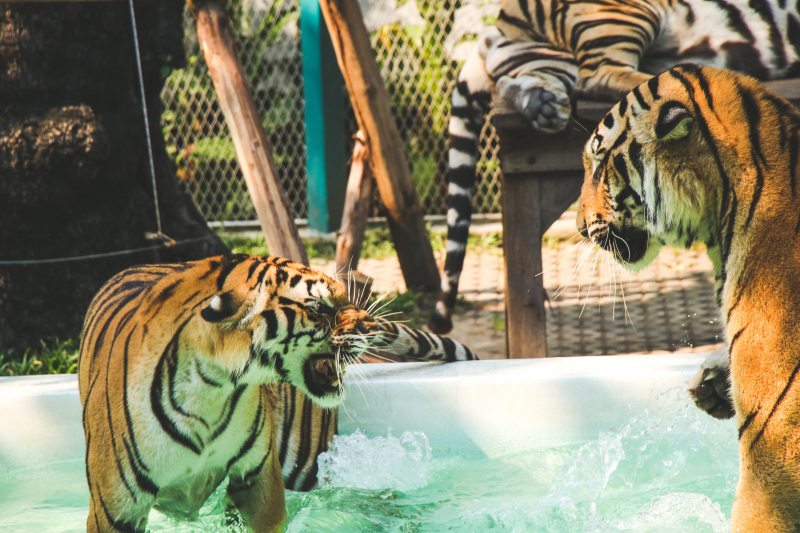
Photo by Sayantan Kundu via pexels 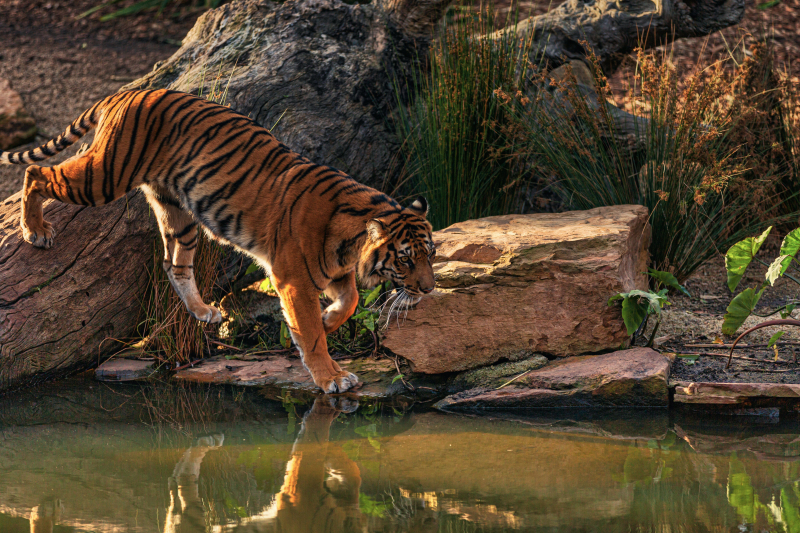
Photo by Robert Stokoe via pexels -
Essay topic: Describe the cutest animal you have ever seen, what is it like, skin color, eye color and characteristics?
Answer:
The cutest animal I have ever seen is the charming red panda named Rusty. Rusty is a small, fluffy creature with a fur coat that resembles a patchwork quilt of rust-colored and cream-colored fur. His fur is incredibly soft to the touch, creating an irresistibly cuddly appearance. The vibrant hue of Rusty's fur stands out against the greenery of the forest, making him a delightful spectacle for anyone fortunate enough to catch a glimpse of this adorable creature.
Rusty's eyes, large and expressive, are a warm chocolate brown that sparkles with curiosity and mischief. The contrast between his fur and the deep richness of his eyes adds to the overall cuteness of his appearance. When Rusty gazes up with those big, soulful eyes, it's impossible not to be enchanted by the innocence and charm that radiate from this endearing red panda.
Characteristic of red pandas, Rusty has a long, bushy tail that serves multiple purposes. Not only does it contribute to his overall balance as he maneuvers through the treetops, but it also acts as a cozy wraparound blanket when he curls up for a nap. His tail, adorned with a mix of rust and cream hues mirroring his fur, becomes a charming accessory that adds to Rusty's overall cuteness.
Rusty's playful nature further enhances his adorable demeanor. He often engages in acrobatic feats, effortlessly leaping from branch to branch with a nimbleness that showcases the agility of red pandas. Whether he's engaged in a game of tag with fellow red pandas or skillfully foraging for bamboo shoots, Rusty's playful antics captivate onlookers and elicit smiles from visitors of all ages.
Beyond his physical cuteness, Rusty's presence at the zoo serves as an ambassador for the conservation of red pandas in the wild. His captivating charm and endearing personality highlight the importance of protecting the natural habitats of these adorable creatures, whose populations face challenges in the wild due to habitat loss and fragmentation.
In conclusion, Rusty the red panda, with his rust-colored fur, chocolate-brown eyes, and playful characteristics, stands as the epitome of cuteness in the animal kingdom. His presence at the zoo not only brings joy to visitors but also raises awareness about the conservation needs of red pandas in their native habitats. Rusty's enchanting appearance and playful antics create a lasting impression, leaving an indelible mark on the hearts of those fortunate enough to witness the cuteness of this delightful red panda.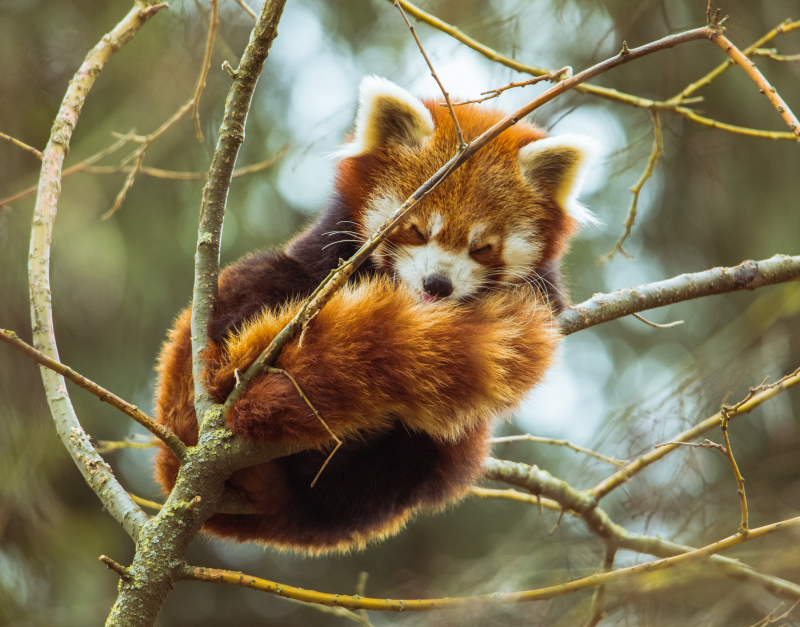
Photo by Ivan Cujic via pexels 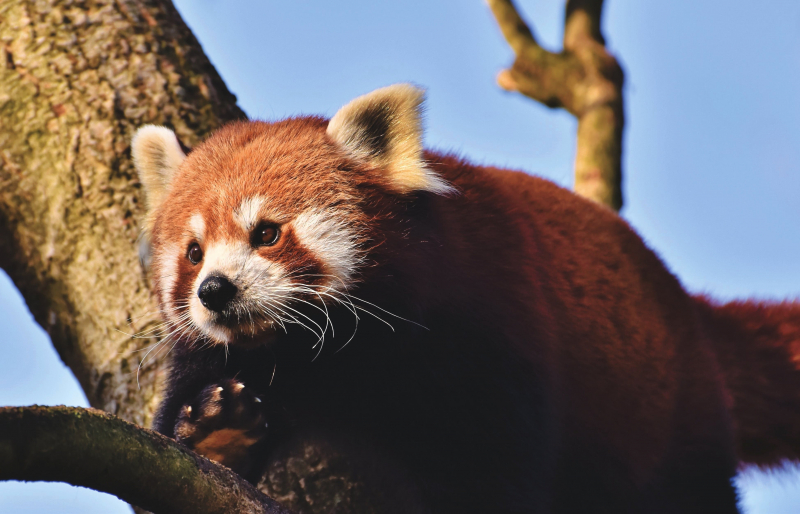
Photo by Ralph via pexels -
Essay topic: Describe your favorite animal at the zoo, what is it like, skin color, eye color and characteristics?
Answer:
One of my favorite animals at the zoo is the captivating giraffe named Grace. Grace stands tall and majestic, her skin adorned with a distinctive pattern of irregular spots in hues of chestnut brown framed by a warm, sandy background. The skin of a giraffe is not only unique in its coloration but also in its texture, as it feels coarse yet strangely comforting to the touch. Grace's eyes, large and expressive, are a gentle and soulful brown that seems to mirror the tranquility of the African savannah that she calls home.
Grace's most remarkable characteristic is, undoubtedly, her towering height. Standing elegantly with a long and slender neck that reaches toward the treetops, she epitomizes the gracefulness that giraffes are known for. The patches on her skin not only serve as a beautiful camouflage in the dappled sunlight but also make Grace easily recognizable among her fellow giraffes. As she moves gracefully through the expansive enclosure, her long legs carry her with a rhythmic and unhurried gait, creating a spectacle of elegance that captivates visitors.
Beyond her physical appearance, Grace possesses a gentle and amiable disposition. Observing her interactions with other giraffes and the zookeepers, it is evident that she is a social creature, enjoying the company of her companions. Grace often engages in playful bouts of necking, a behavior where giraffes gently rub their necks against each other, reinforcing the bonds within the giraffe community. Her sociable nature and the harmonious dynamics among the giraffes contribute to the overall sense of well-being within their enclosure.
Grace's presence at the zoo serves not only as a source of awe for visitors but also as a testament to the importance of conservation efforts. Zoos play a crucial role in raising awareness about endangered species and providing a platform for educational initiatives. Grace, as an ambassador for her species, represents the challenges faced by giraffes in the wild and the need for conservation measures to protect their natural habitats.
In conclusion, Grace the giraffe, with her chestnut-brown spots, soulful brown eyes, and elegant stature, stands as a symbol of the beauty and wonder found in the animal kingdom. Her presence at the zoo serves as an opportunity for visitors to connect with and appreciate the magnificence of giraffes while promoting awareness about the conservation of these graceful creatures in their natural habitats. Grace's tranquil demeanor and the awe-inspiring sight of her towering above the landscape create a memorable and educational experience for all who have the privilege of witnessing her beauty at the zoo.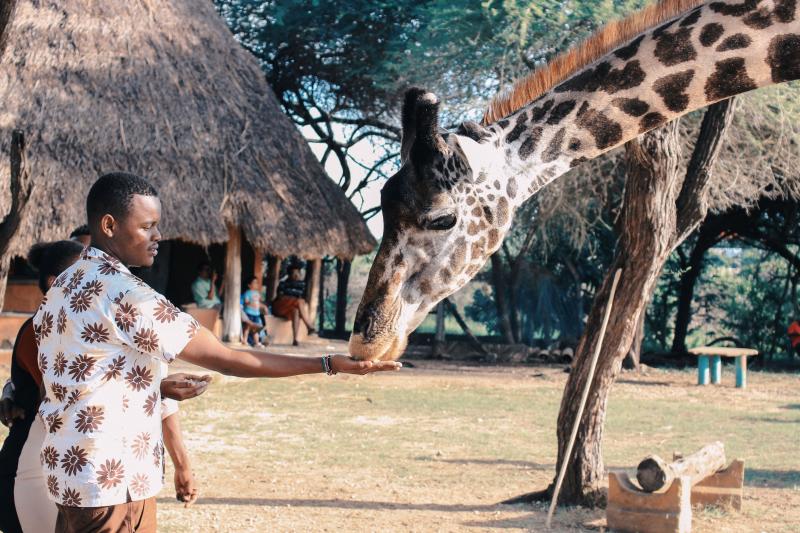
Photo by Git Stephen Gitau via pexels 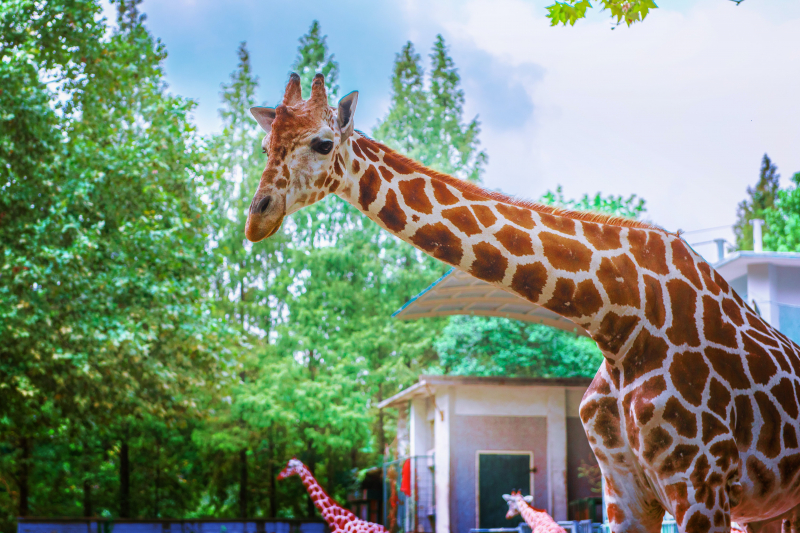
Photo by Haugenzhays Zhang via pexels -
Essay topic: Describe an animal that should not be extinct, what is it like, skin color, eye color and characteristics?
Answer:
One remarkable animal that should not be extinct is the magnificent Bengal tiger. This majestic creature is renowned for its distinctive orange fur, adorned with characteristic dark stripes that create a mesmerizing pattern. The Bengal tiger's eyes, deep and expressive, gleam with an intense amber hue, reflecting both its predatory prowess and its enigmatic nature. Standing as the embodiment of strength and grace, the Bengal tiger possesses a sleek and powerful physique, characterized by muscular limbs and a robust build.
The Bengal tiger's fur, predominantly orange with a hint of white on its underbelly, serves as a natural camouflage in the dense forests it calls home. The dark stripes that adorn its coat are not only aesthetically striking but also play a crucial role in helping the tiger blend seamlessly into its surroundings. These distinctive markings are unique to each individual, akin to a fingerprint, making every Bengal tiger truly one of a kind.
Known for its solitary and elusive nature, the Bengal tiger is a master of stealth and surprise. It moves through its habitat with a quiet and calculated grace, its powerful frame allowing for swift and silent movements. Despite its solitary tendencies, the Bengal tiger is not without moments of sociability. It engages in various vocalizations, including roars, growls, and chuffing sounds, to communicate with other tigers and establish its presence in the territory.
Beyond its physical attributes, the Bengal tiger plays a vital role in maintaining the ecological balance of its habitat. As an apex predator, it helps control the population of herbivores, preventing overgrazing and ensuring the health of the ecosystem. Its existence is intertwined with the delicate web of life, and its presence signifies a thriving and biodiverse environment.
The Bengal tiger's current endangered status highlights the urgency of conservation efforts. Human activities such as habitat destruction and poaching have threatened this magnificent species, pushing it to the brink of extinction. Efforts to protect and preserve the Bengal tiger involve establishing and maintaining protected areas, implementing anti-poaching measures, and raising awareness about the importance of coexisting with these incredible creatures.
In a world where biodiversity is a testament to the richness of our planet, the preservation of the Bengal tiger becomes not just a conservation imperative but a commitment to safeguarding the intricate tapestry of life. This extraordinary animal, with its striking appearance and ecological significance, deserves a future where it can continue to roam the forests, embodying the wild beauty that defines our natural heritage.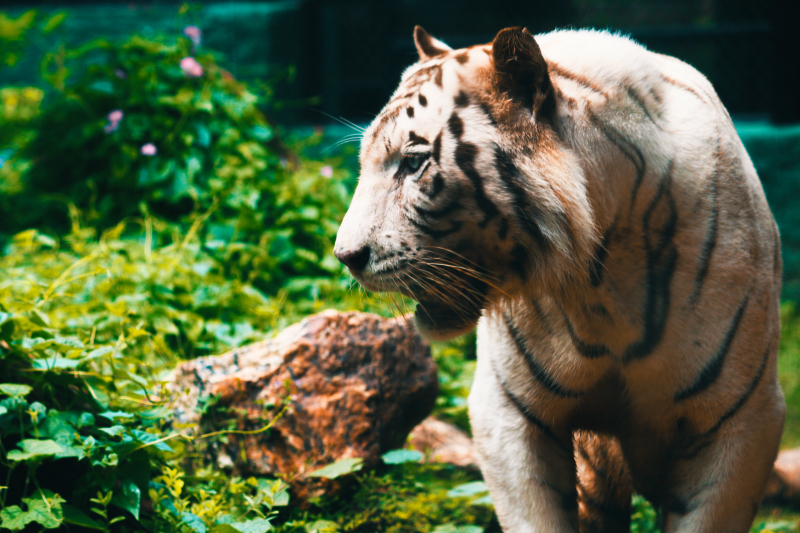
Photo by sk via pexels 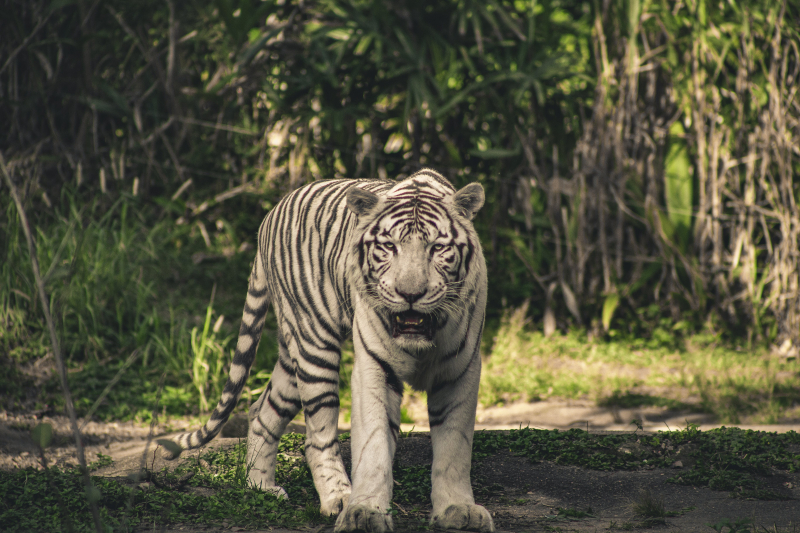
Photo by Lucas Pezeta via pexels -
Essay topic: Describe a farm animal you like, what is it like, skin color, eye color and characteristics?
Answer:
One of the farm animals that I particularly adore is the gentle and endearing goat named Daisy. Daisy, with her soft, cream-colored fleece, exudes a warmth that immediately captivates anyone fortunate enough to encounter her. Her eyes, a deep and soulful brown, reflect a curious intelligence and a gentle spirit. The contrast between the velvety texture of her fleece and the kindness emanating from her eyes creates an enchanting combination, making Daisy a truly charming presence on the farm.
Daisy's coat, a luscious shade of cream, is not only pleasing to the eye but also serves as a testament to her well-cared-for and healthy lifestyle. In the radiant sunlight of the farm, her fleece takes on a golden hue, adding a touch of radiance to her overall appearance. The way her fleece sways with each movement accentuates the grace inherent in her nature, embodying the tranquil and idyllic spirit of farm life.
Beyond her physical attributes, Daisy's personality is equally captivating. She is known for her friendly and sociable demeanor, always eager to approach visitors with a gentle nuzzle or a soft bleat. Daisy's sociability extends to her interactions with other farm animals, fostering a harmonious environment where camaraderie thrives. Whether grazing in the pasture or enjoying the shade of a large oak tree, Daisy's presence brings a sense of calm and contentment to the entire farm.
One remarkable aspect of Daisy's character is her inherent curiosity. When presented with new sights or sounds, her inquisitive nature takes over, and she approaches these stimuli with a cautious yet open-minded spirit. This curiosity not only adds a delightful element to her personality but also showcases the intelligence that goats are known for, making Daisy an engaging and delightful companion for those who spend time with her.
Daisy's contributions to the farm extend beyond her charming presence. As a diligent grazer, she plays a crucial role in maintaining the landscape, ensuring that the fields remain healthy and vibrant. Her rhythmic chewing and the occasional bleats create a comforting soundtrack that harmonizes with the rustic ambiance of the farm.
In conclusion, Daisy, the cream-colored goat with soulful brown eyes, represents the epitome of charm and tranquility on the farm. Her gentle nature, curiosity, and contributions to the farm community make her a beloved and cherished member of the farm family. Through Daisy's presence, the farm comes alive with a sense of harmony, weaving a narrative of rural serenity that unfolds in the golden glow of the sunlit pasture.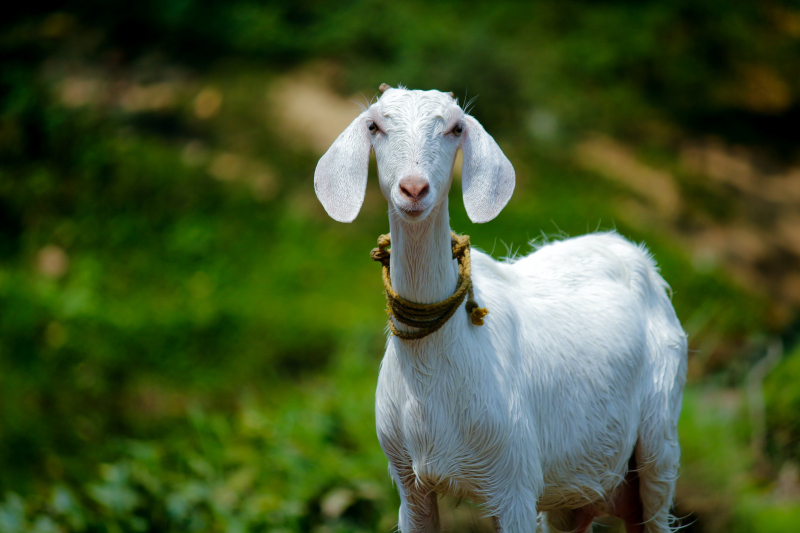
Photo by Nandhu Kumar via pexels 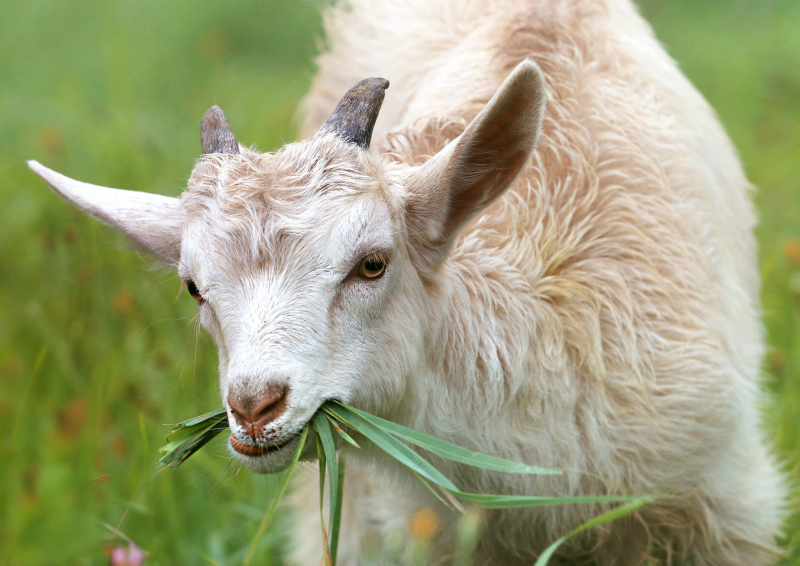
Photo by Pixabay via pexels -
Essay topic: Describe the coolest wild cat in the land, what is it like, skin color, eye color and characteristics?
Answer:
The coolest wild cat in the land is undeniably the magnificent snow leopard named Luna. Luna, with her ethereal silver-gray fur adorned with distinctive rosette patterns, embodies a majestic beauty that is both elusive and enchanting. Her eyes, a mesmerizing shade of icy blue, gleam with intelligence and a sense of mystery, adding an extra layer of allure to her already captivating appearance. The combination of Luna's sleek silver coat and piercing blue eyes creates a vision of elegance and grace that sets her apart as the coolest wild cat in the vast landscapes she calls home.
Luna's fur, a soft and dense coat that serves as a perfect camouflage against the snow-covered terrain, showcases her adaptability to the harsh environments she navigates. The silver-gray hue, accented by darker rosettes, not only provides Luna with an exquisite and unique coat but also allows her to seamlessly blend into her surroundings, becoming a ghostly figure amidst the pristine snowfields and rocky cliffs.
Beyond her physical beauty, Luna possesses characteristics that elevate her status as the coolest wild cat. Her silent and stealthy movements make her a master of surprise, effortlessly traversing the rugged mountain landscapes with an unmatched agility. Luna's ability to navigate challenging terrains and her elusive nature make her a symbol of resilience and adaptability in the face of adversity.
Luna's eyes, with their striking icy blue color, reflect a depth of intelligence and awareness. The piercing gaze seems to hold ancient secrets and a profound understanding of the vast, untamed wilderness she calls her domain. It is as if Luna's eyes capture the essence of the mountains, echoing the solitude and tranquility of the high-altitude landscapes she inhabits.
In addition to her physical prowess, Luna's solitary yet regal demeanor adds to her allure. She is a creature of solitude, gracefully navigating the towering peaks and rocky cliffs with a silent strength. Luna's independence and self-sufficiency make her a symbol of resilience, embodying the untamed spirit of the high-altitude wilderness.
In conclusion, Luna, the snow leopard with her silver-gray coat and piercing blue eyes, stands as the coolest wild cat in the land. Her unique appearance, adapted for survival in the snowy realms, coupled with her elusive nature and regal presence, creates an image of unparalleled coolness in the vast and challenging landscapes she calls her home. Luna represents the embodiment of grace, resilience, and untamed beauty in the high-altitude realms where she reigns supreme.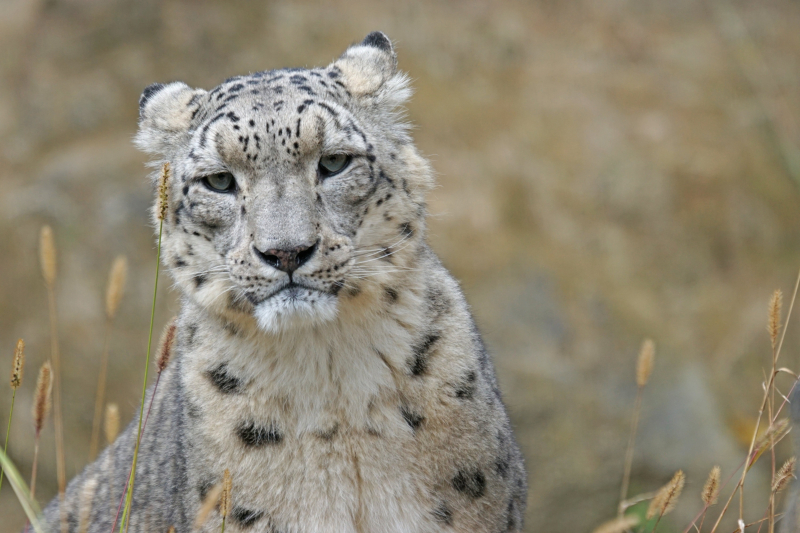
Photo by Pixabay via pexels 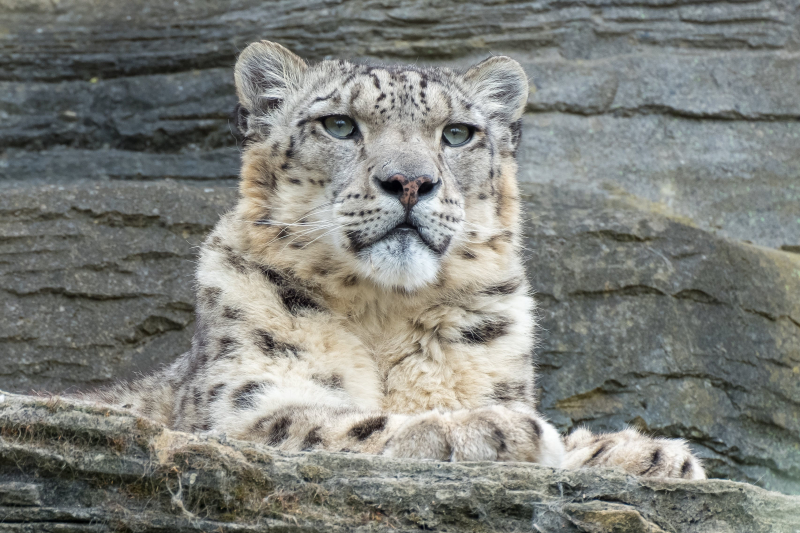
Photo by Charles Miller via pexels -
Essay topic: If animals could talk, my best friend would be... describe the animal you think of most accurately.
Answer:
In the whimsical scenario where animals could talk, envisioning my best friend as a chatty and insightful parrot named Pablo fills my imagination with vibrant colors and lively conversations. Pablo, with his emerald-green feathers and a playful twinkle in his eye, would be the ideal feathered confidant. His ability to mimic human speech and his knack for adopting an extensive vocabulary would make every interaction an entertaining and enlightening experience.
Pablo's vibrant personality would shine through not only in his colorful plumage but also in the animated gestures and squawks that accompany his words. Picture him perched on my shoulder, his feathers ruffling with excitement as he shares amusing anecdotes or imparts words of wisdom. The dynamic interplay of his expressive body language and articulate speech would create a bond that transcends the conventional boundaries of human-animal communication.
One of the remarkable aspects of Pablo's hypothetical ability to talk is his potential as a storyteller. Imagine the joy of hearing tales from his perspective - accounts of soaring through the rainforest canopy, encounters with fellow parrots, and his unique observations of human activities. Pablo's storytelling prowess would transform mundane moments into vivid narratives, injecting a sense of wonder into our daily lives.
The depth of our friendship would be enriched by Pablo's keen sense of empathy. As a perceptive parrot, he would pick up on my moods and emotions, offering comforting words during times of sadness and sharing jubilant chirps to celebrate moments of happiness. His empathetic nature would create a profound connection, bridging the gap between the human and avian worlds.
In our imaginary world where animals converse, Pablo's linguistic skills would extend beyond casual banter to meaningful discussions. We would delve into topics ranging from the wonders of nature to the complexities of human emotions. His unique perspective on life, shaped by the experiences of a parrot navigating both the wild and domestic realms, would bring fresh insights and a touch of whimsy to our conversations.
Pablo's hypothetical ability to talk would also make him an invaluable companion in learning about the rich tapestry of the avian world. Together, we would explore the intricacies of bird communication, the diverse species that share our planet, and the environmental challenges faced by our feathered friends. Pablo's firsthand knowledge would serve as a gateway to a deeper understanding of the interconnectedness of all living beings.
In conclusion, the imaginary friendship with Pablo, the talking parrot, offers a delightful glimpse into a world where interspecies communication is not only possible but also enriching. His vibrant personality, storytelling prowess, empathetic nature, and capacity for meaningful discussions would make him an extraordinary and cherished best friend in this whimsical realm of talking animals.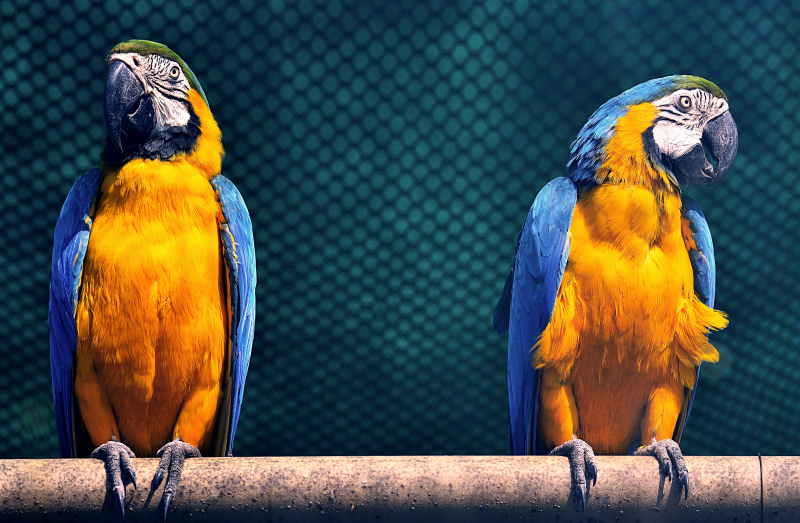
Photo by Jamshed Ahmad via pexels 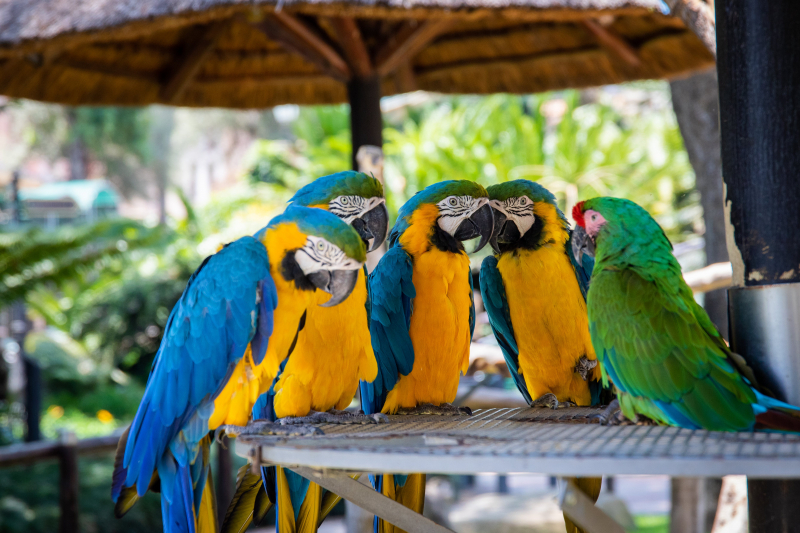
Photo by Magda Ehlers via pexels -
Essay topic: Tell the story of your faithful dog and the adventures you've shared together. How has your dog been a source of comfort and companionship?
Answer:
My faithful dog, named Max, has been an indispensable part of my life, bringing boundless joy and companionship into my everyday existence. From the moment we first met, his energetic tail wags and warm, expressive eyes conveyed an instant connection that transcended words. Max, a playful Labrador Retriever, has not only been a loyal pet but a cherished companion through thick and thin.Our adventures together have formed a tapestry of unforgettable moments. One such memory etched in my heart is our weekend hikes in the nearby woods. Max's enthusiasm was palpable as he bounded ahead, his tail resembling a metronome of happiness. The rustle of leaves beneath his paws echoed the thrill of exploration, and the air was filled with the harmony of birdsong. These outdoor escapades became a sanctuary of tranquility and a source of bonding, as Max's exuberance mirrored my own sense of liberation amid nature's embrace.
In moments of solitude, Max became my confidant. His warm presence beside me on lazy Sunday afternoons brought a soothing calmness. As I poured my thoughts into a journal, Max would rest his head on my lap, offering silent support and understanding. His ability to sense emotions, whether joy or sorrow, created an unspoken language that strengthened our connection.
During challenging times, Max's unwavering companionship became a pillar of comfort. His expressive eyes held a depth of empathy, providing solace that transcended verbal communication. The rhythmic cadence of his breathing and the gentle thud of his tail against the floor became a reassuring soundtrack, offering a sense of stability and reassurance.
In the evenings, as we settled into the familiar routine of shared silence, Max's presence became a beacon of warmth. Whether curled up on the couch or lying at my feet, he emanated a quiet reassurance that transformed the ordinary into the extraordinary. As the world outside seemed to whirl with chaos, Max's steadfast companionship created a haven of serenity within the confines of our home.
In conclusion, Max, my faithful Labrador, has not only been a pet but a steadfast companion, weaving a tapestry of shared adventures, silent understanding, and unwavering comfort. Our journey together is a testament to the profound bond between humans and their canine companions, a bond that transcends words and enriches the fabric of our lives with unconditional love and cherished moments.
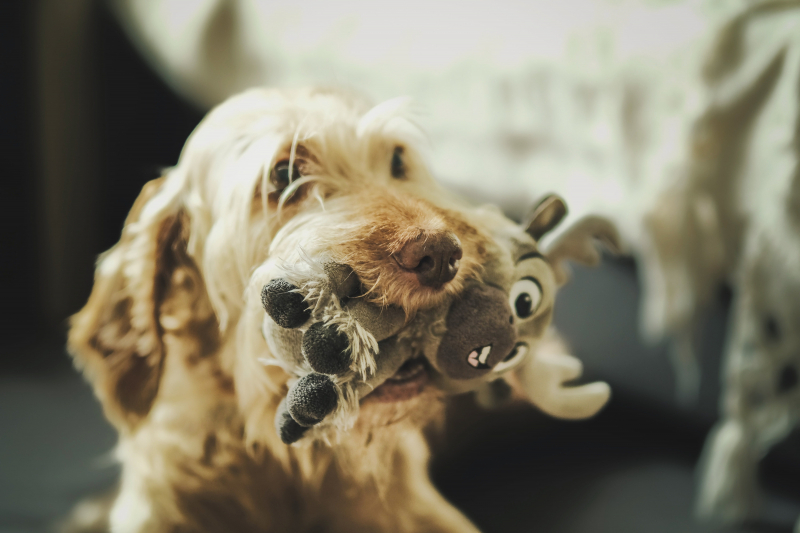
Photo by Andreas Schnabl via pexels 
Photo by Jens Mahnke via pexels -
Essay topic: Observe a group of ants and describe their diligent work. How do they collaborate and contribute to their community?
Answer:
As I sat down to observe a group of ants, I was immediately captivated by the industrious activities taking place within their tiny world. These tiny creatures moved with purpose, each one seemingly aware of its role in the collective effort. The ant colony was a bustling community, and my attention was drawn to the intricate dance of cooperation unfolding before my eyes.
I focused on a line of ants marching purposefully in a single file. They carried morsels of food much larger than themselves, displaying remarkable strength and determination. It was fascinating to witness their ability to work together seamlessly, creating a sense of unity within the colony. The collaboration among the ants became even more evident as they navigated obstacles, seamlessly adjusting their course to overcome challenges.
Observing closely, I noticed that some ants had specific roles within the group. Larger ants seemed to take on the responsibility of carrying more substantial loads, while smaller ones scurried around, attending to different tasks. It became apparent that each ant had a unique function, contributing in its own way to the overall well-being of the colony.
One aspect that stood out was the constant communication among the ants. They used a combination of tactile movements and chemical signals, creating a sophisticated form of non-verbal language. This intricate communication system allowed them to convey information about food sources, potential threats, and the overall status of the colony.
As the ants diligently carried out their tasks, I couldn't help but marvel at the efficiency of their teamwork. It was a reminder that, despite their small size, ants demonstrated a remarkable level of organization and collaboration. Their ability to work together for the greater good of the colony was a testament to the strength of communal efforts in the natural world.
In conclusion, my observation of the ant colony revealed a world of harmony and collaboration. These tiny insects, through their coordinated efforts and unique roles, showcased the power of teamwork in building a thriving community. The ants served as a reminder that even the smallest contributions, when combined, can lead to the success and prosperity of the entire group.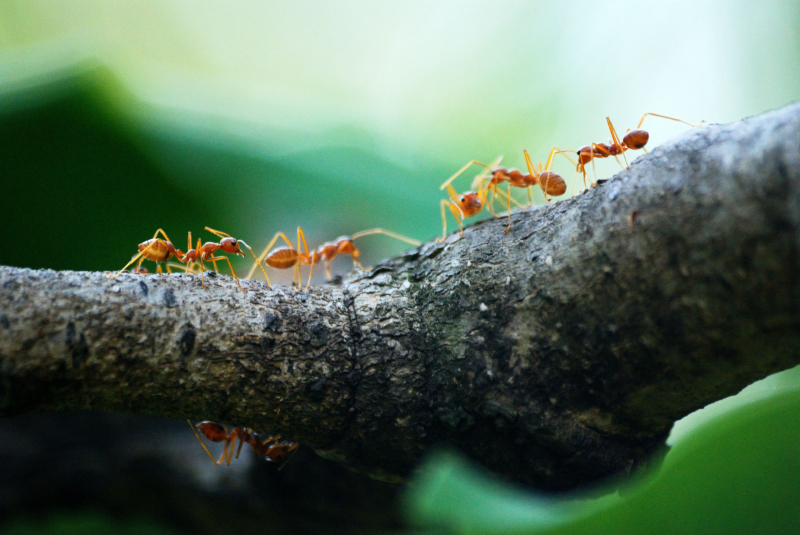
Photo by Poranimm Athithawatthee via pexels 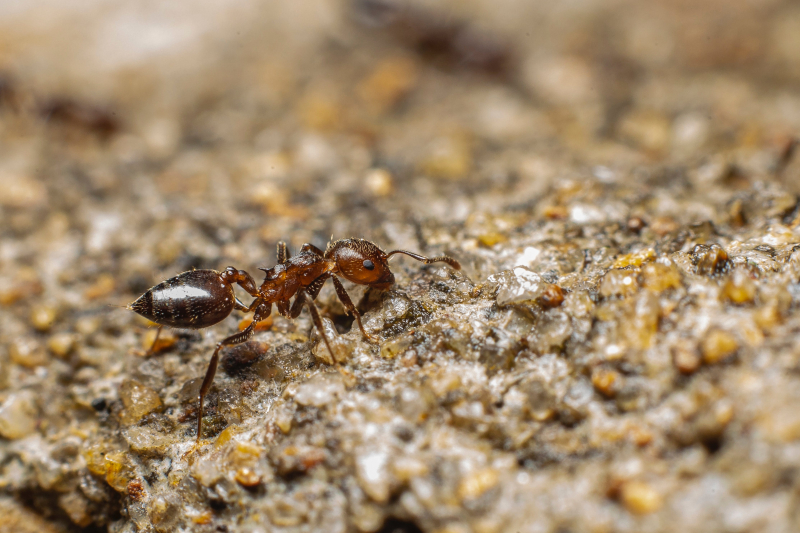
Photo by Jimmy Chan via pexels

















